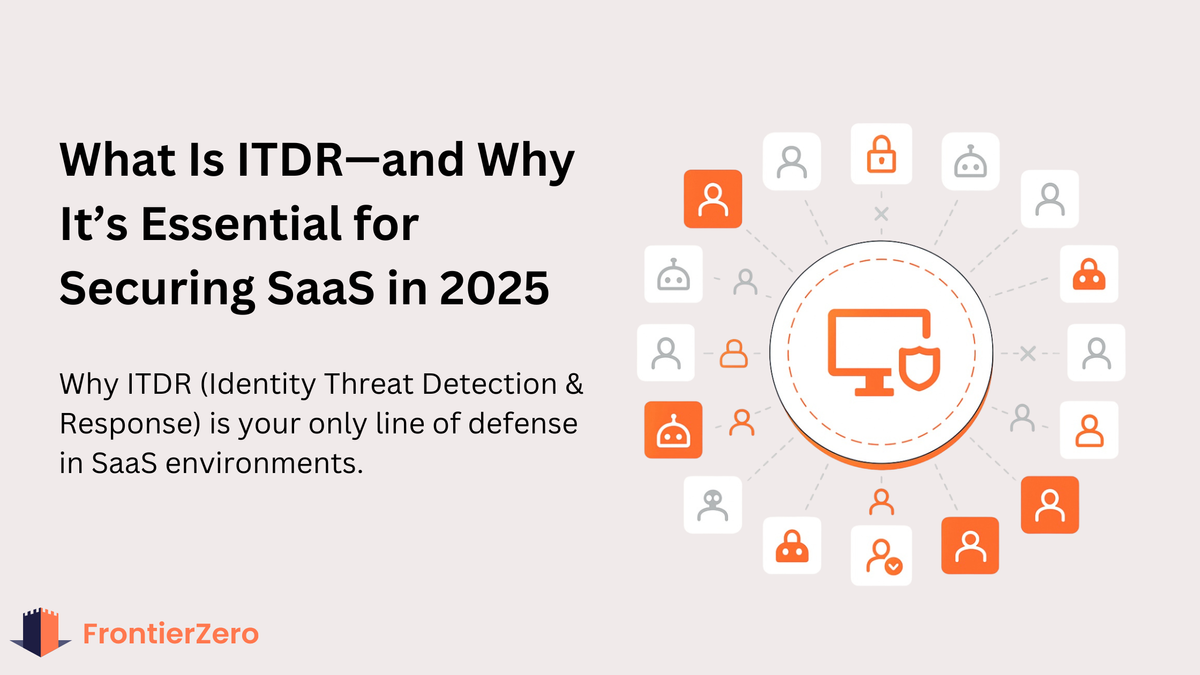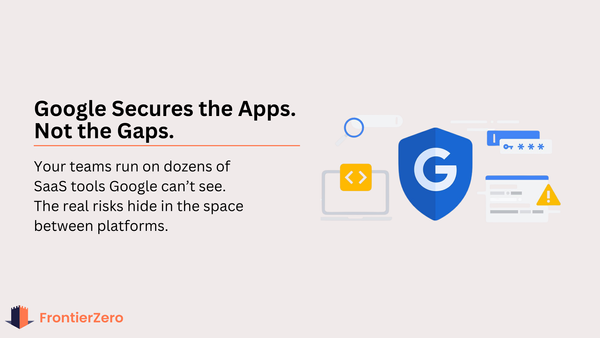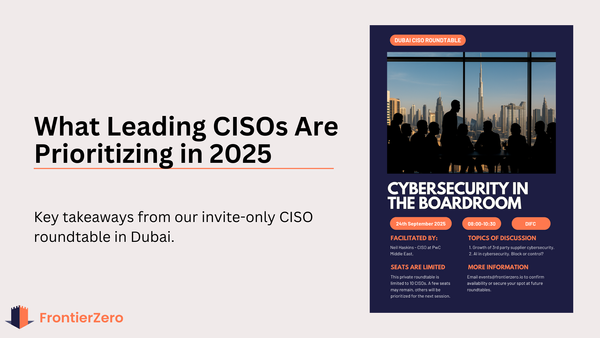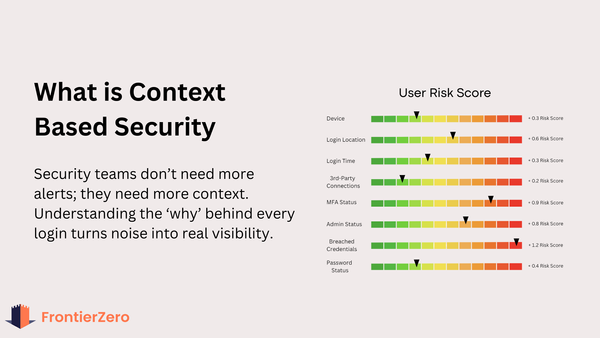What Is ITDR—and Why It’s Essential for Securing SaaS in 2025
SaaS has changed the identity perimeter. In this guide, we break down what ITDR means, why legacy tools miss SaaS threats, and how to catch ghost access.

Most security teams have visibility over devices, networks, and endpoints.
But identity?
That’s the blind spot attackers are aiming for.
Enter: ITDR — Identity Threat Detection and Response
ITDR stands for Identity Threat Detection and Response. It's a growing category of security tooling and practices that focus on monitoring, detecting, and responding to threats targeting user identities—before they escalate into full-blown incidents.
In a world where initial access usually begins with stolen or misused identity, ITDR is rapidly becoming as essential as EDR (Endpoint Detection and Response).
But in SaaS-first environments, ITDR looks a little different.
Why Traditional Detection Doesn’t Work for Identity
Let’s get real: today’s SaaS environments are fragmented, dynamic, and often invisible to legacy tools.
Your user identity can live across:
- Google Workspace or Microsoft Entra ID
- 100+ third-party SaaS apps connected via OAuth
- AI copilots granted file access
- Low-code automation syncing data to unknown destinations
- Password managers and shared credentials
- Shadow IT tools employees connect without approval
The identity perimeter no longer lives in one place. It’s spread across browsers, devices, and clouds. And so are the threats.
What Makes ITDR in SaaS Different?
Most ITDR solutions were built with Active Directory in mind. But in the SaaS world, attackers don’t need malware or privilege escalation. They just need:
✅ A reused password✅ An OAuth token✅ An ex-employee's still-active login✅ A connected AI tool no one’s watching
SaaS identity threats are subtle. They're not brute force attacks on domain controllers. They're ghost logins, unmonitored automations, and slow exfiltration through “trusted” apps.
That’s why SaaS needs modern ITDR capabilities, such as:
✅ Context-aware login detection (device, browser, VPN, behavior)
✅ Mapping OAuth permissions and 3rd-party access
✅ Detecting high-risk user behavior (e.g. downloading large files at 3am on new device)
✅ Flagging unused privileged accounts
✅ Correlating identity signals with dark web breach intelligence
Real-World SaaS Identity Threats ITDR Can Catch
🔐 Orphaned accounts still logging into sensitive tools after offboarding🧠 AI tools connected to HR or legal docs without any audit trail🌍 Access from new countries using the same session token🧩 Shared credentials giving multiple users access to one privileged account🕵️♂️ OAuth connections reading inboxes or writing to Google Drive, undetected
Traditional SIEMs and XDRs miss this.
But ITDR that’s built for SaaS can bring this to the surface—before attackers do.
Why ITDR Is No Longer Optional in SaaS Environments
If you’ve moved to SaaS, you’ve also moved your identity perimeter into the wild.
Here’s what that means:
- You can’t see what’s connected unless you have visibility into third-party access.
- You can’t trust what you don’t own—and many users connect tools you’ve never approved.
- You can’t secure what you don’t monitor—and most SaaS identity threats fly under the radar.
And when compliance or breaches come knocking, your audit trail needs to go deeper than login/logout logs.
Final Thought: Identity Is the New Endpoint
SaaS changed the game.
You no longer own the apps. You don’t control the devices. But you’re still responsible for the access.
That’s why identity is the new security perimeter, and ITDR is your frontline defense.
Want to see how identity threats show up in your SaaS stack?
FrontierZero monitors login behavior, maps risky third-party access, checks against 20B+ dark web records, and helps you uncover ghost access before it becomes your next incident.




